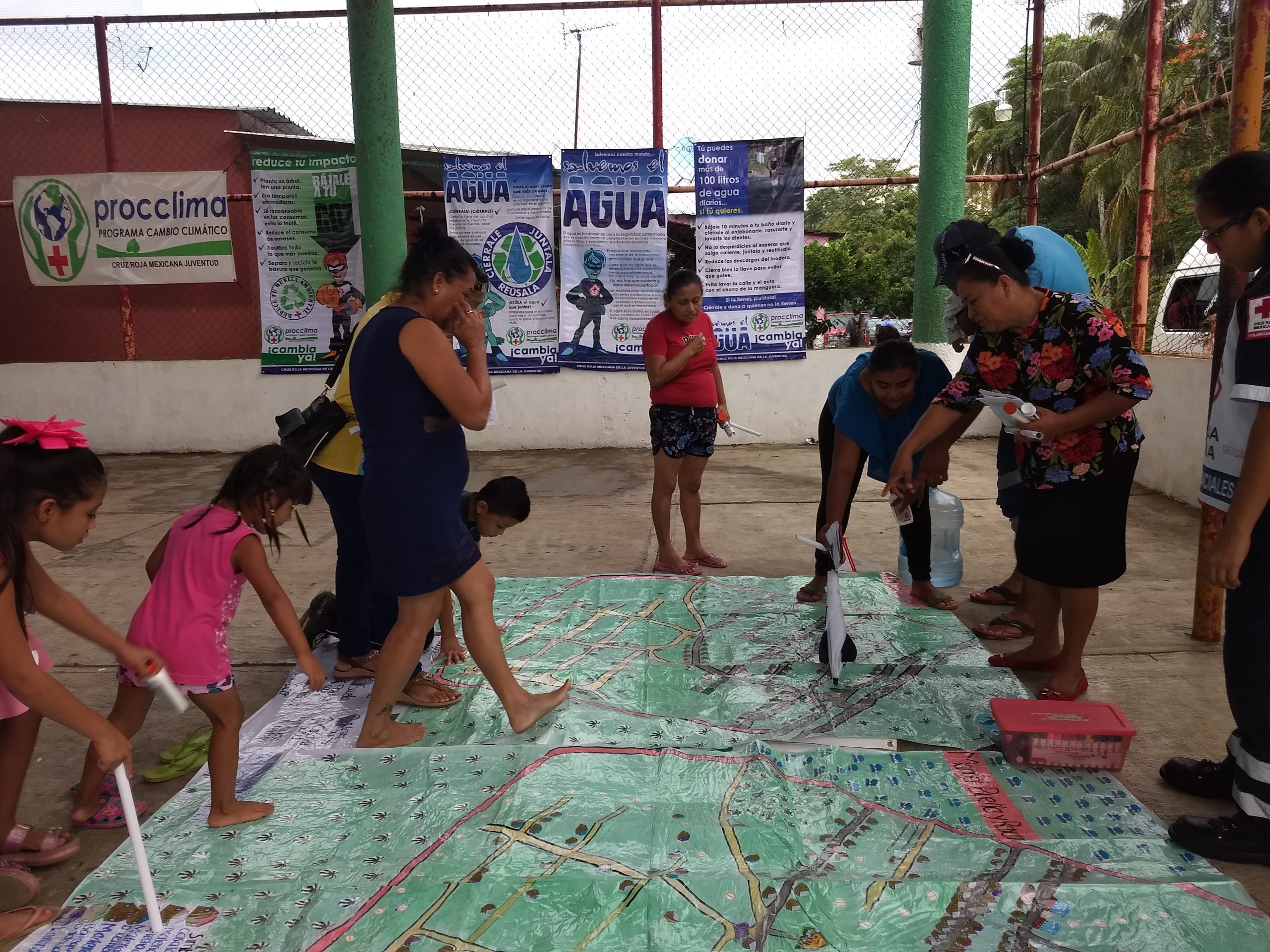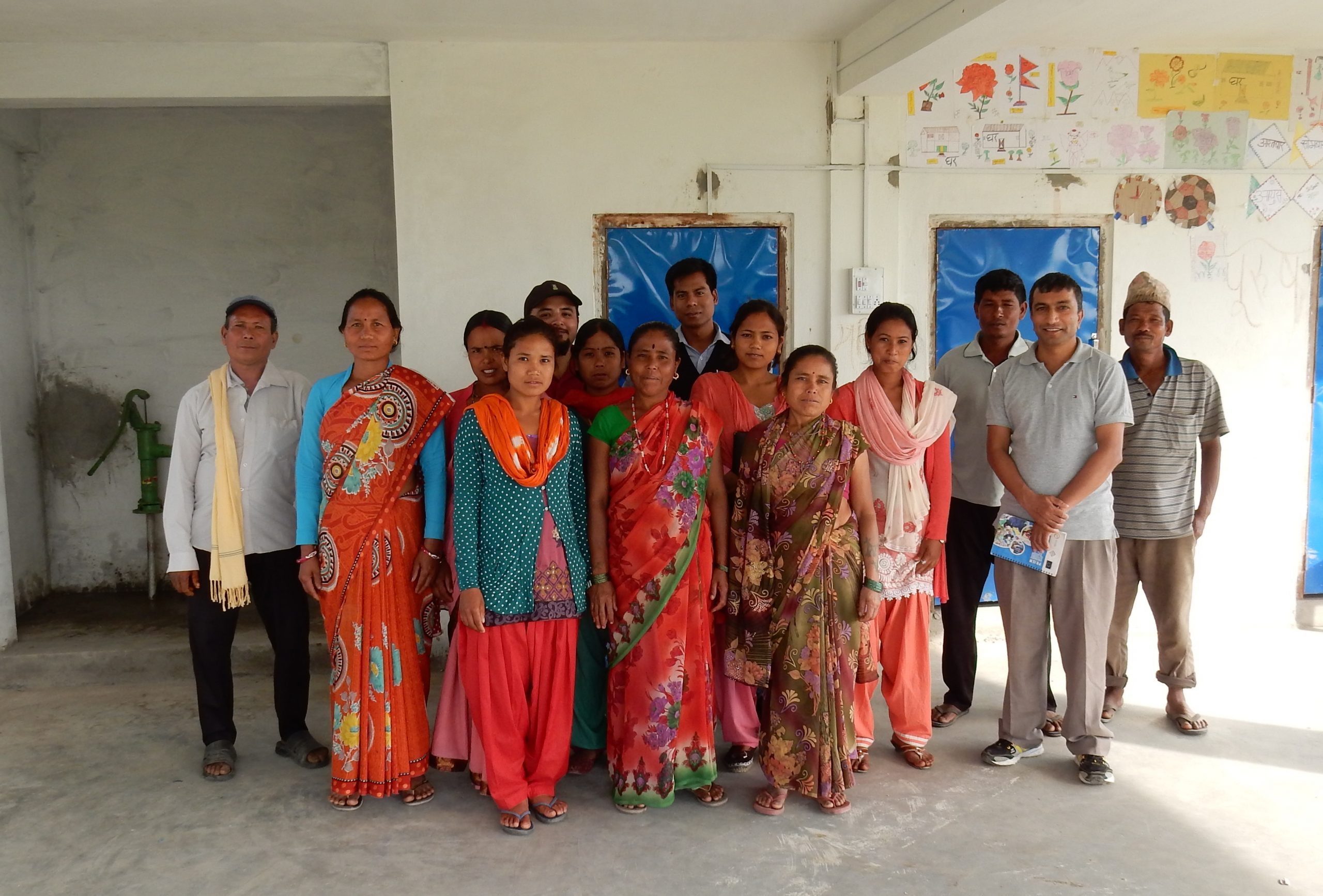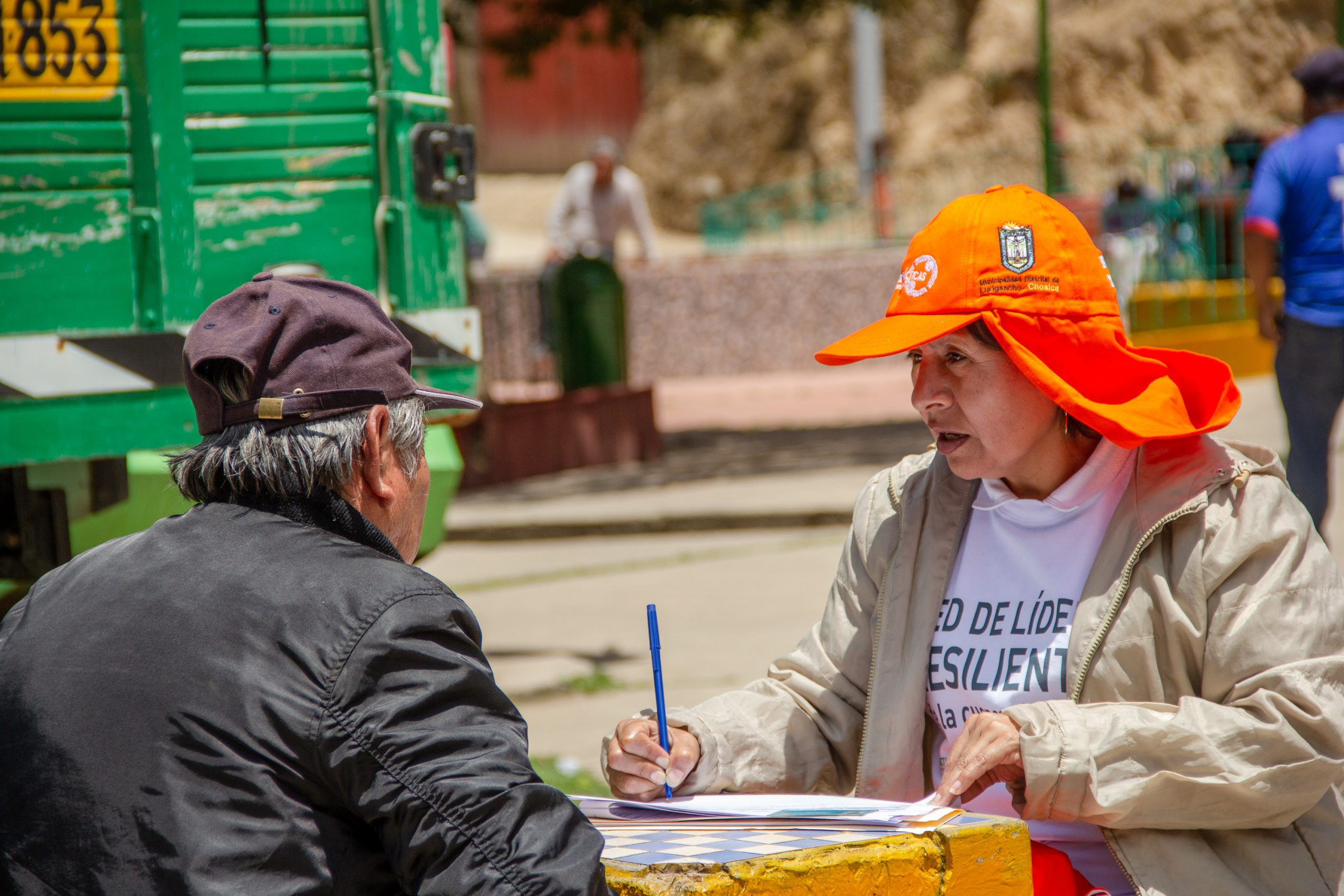This is the first blog in a series of three where we get to learn from the experiences of Zurich Flood Resilience Alliance colleagues that have been involved in the roll out of the Flood Resilience Measurement for Communities (FRMC). Here you will get some useful advice on ways to ensure positive engagement when introducing the FRMC in a new community.
The FRMC is a framework and tool for measuring levels of community resilience against floods based on data collected from the community in question using household surveys, focus groups, key informant interviews and third source data. Since the successful implementation of the FRMC depends on the information provided by members of the community, it is vital that the community is willing to engage with the process.
This blog is based on interviews with the following Alliance colleagues who have all been closely involved in the roll out of the FRMC into new communities: Brenda Avila Flores, Country Programme Coordinator and Jimena Cuevas Portilla, Knowledge Manager at Red Cross Mexico, Fatos Xhengo, Country Programme Coordinator and Said Bushaj, FRMC Lead at Red Cross Albania, Bikram Rana Tharu, Project Manager and Madhab Uprety, Knowledge Officer at Practical Action Nepal, and Miguel Arestegui, Project Manager at Practical Action Peru.
Get to know the community first
Every community is unique and what works in one place might not work in the next, hence the most important advice all Alliance colleagues gave was to make sure you understand the community and what will work best in its specific context.
Before Mexico Red Cross started data collection they spent three months in the community doing various forms of awareness raising work to build relationships with community members. Brenda advices that it is worth investing in the preparatory work as this makes the data collection run a lot smoother.

Tap into existing community groups and networks
In Nepal Practical Action worked closely with local Community Disaster Management Committees in the FRMC roll out. These committees, originally set up by Practical Action as an aspect of Early Warning Systems, can help facilitate community engagement. Additionally, they should be interviewed as key informants as they have valuable insight into the community’s resilience levels.

One Peruvian community where Practical Action works is a rural farming community spread over a large area. To reduce the risk of community members not engaging with the FRMC because of time commitments or travel requirements the team engaged by attending their Sunday Community Assembly once a month. Community members were more likely to attend as doing so did not require any additional resources or time.
Set realistic expectations
It’s important to explain what the FRMC is and how the process can benefit the community and its members, without overpromising.
You’ll need to make it clear that the FRMC will help the community identify gaps in resilience that need to be filled, but that the organisation itself might not be able to provide or finance all solutions the community identifies, and much of the resilience building work is to be taken on by the community itself.
The International Federation of Red Cross and Red Crescent Societies organisations highlighted the importance of also explaining that they are not a government agency, nor do they have direct influence over government policy.
Avoid jargon and technical language
The use of appropriate language is really important. Brenda advises against the use of jargon and Miguel highlights the importance of staff being able to describe the process and ask questions using everyday vocabulary.
Mexican Red Cross often use an X-ray analogy to explain what the FRMC is and does. Just as an X-ray helps diagnose where the bone is broken so does the FRMC diagnose where resilience is weak, in both cases you gain the information you need to take action and improve the situation.
Choose the right staff
In Albania having volunteers from within the community, or nearby communities, carry out the data collection was helpful as they are relatable and trusted by community members.
In Nepal most data collection was carried out by local field staff from partnering organisations as interviews needed to be conducted in Nepali and local Tharu language. One downside of this was some people feeling suspicious against community members involved in the data collection, assuming they felt superior as a result of their involvement in the work and/or that they had no business knowing sensitive information about those surveyed.
In Peru much of the data collection was carried out by members of a group of community leaders whose creation has been facilitated through Practical Action’s work in the area during the first phase of ZFRA. The now self-sufficient group has volunteered their support as they see the benefit the FRMC has had on their own communities and want to share this with others.

Remember that the FRMC is a part of a bigger process
Both Brenda and Miguel pointed out the importance of viewing, and describing, the FRMC process as one aspect of a larger, participatory, process that neither begins nor ends with the FRMC tool.
Learn more
If you want to learn more about the FRMC or access guidance on how best to use it you can do so on our dedicated FRMC page.
The next blog in this series gives advice on the topic of timing for ensuring that community members are able to engage with the FRMC process. The third blog is focused on the importance of including the voices of marginalised groups in the collected data and how the teams have approached this.

Comments